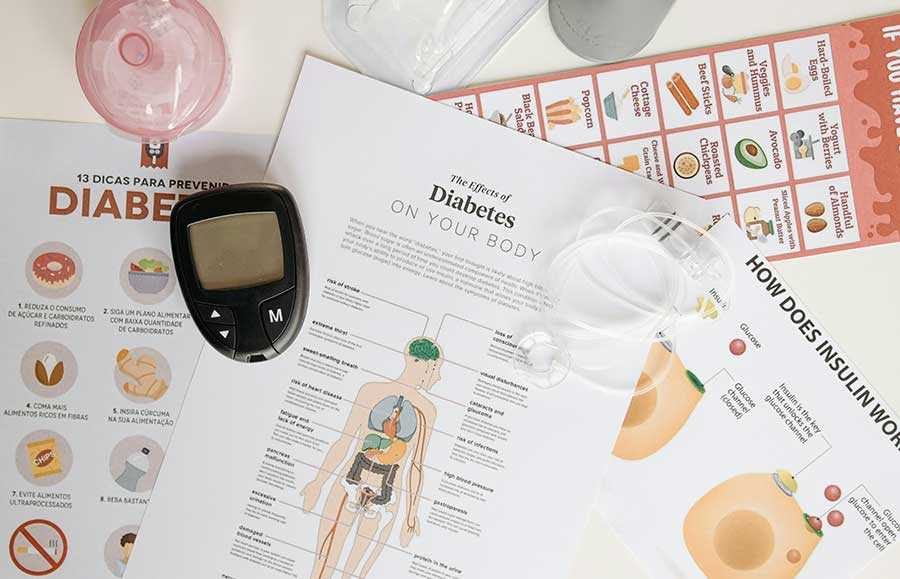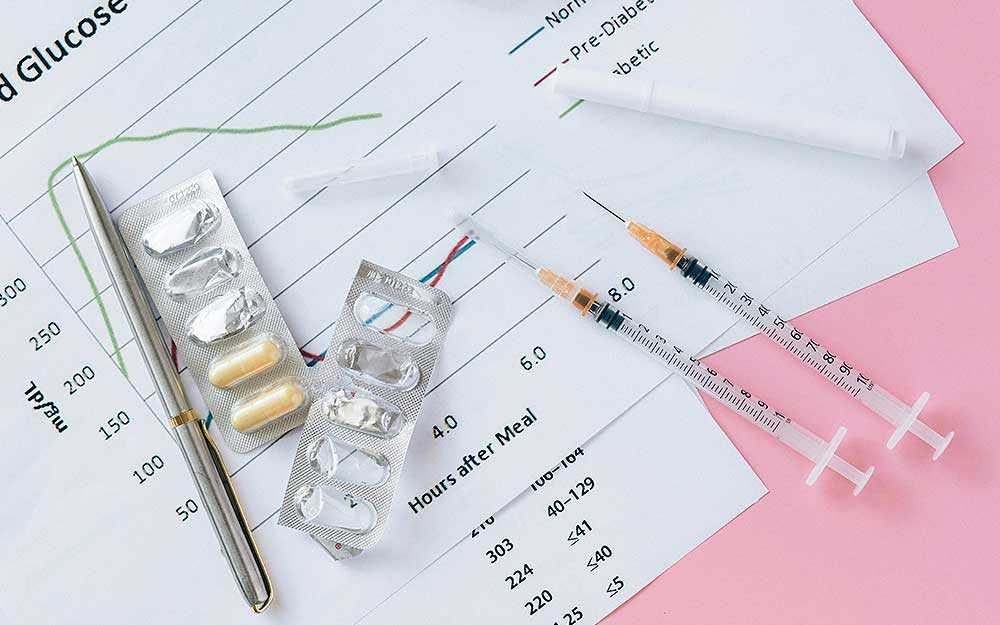By Low Carb Keto Health
Prediabetes and insulin resistance are increasingly common metabolic conditions, and without proper intervention, they can lead to type 2 diabetes and other serious health issues. While lifestyle factors like physical activity are important in managing these conditions, diet plays an even more pivotal role. The ketogenic (keto) diet, characterised by a high-fat, low-carbohydrate approach, has shown great promise in helping people with prediabetes and insulin resistance regain control of their blood sugar and improve insulin sensitivity.
What Is Prediabetes and Insulin Resistance?
Understanding Prediabetes
Prediabetes is a condition where blood sugar levels are higher than average but not high enough to be classified as diabetes. People with prediabetes are at risk of progressing to type 2 diabetes if lifestyle changes are not implemented. It’s a wake-up call that the body is starting to lose its ability to regulate glucose effectively.
What is Insulin Resistance?
Insulin resistance occurs when the body’s cells stop responding efficiently to insulin, a hormone that helps transport glucose from the bloodstream into cells to be used for energy. When cells become resistant to insulin, blood sugar levels rise, and the pancreas produces more insulin to compensate. This cycle can eventually lead to elevated blood sugar levels and type 2 diabetes.
What is the Ketogenic Diet?
The ketogenic diet is a high-fat, very low-carbohydrate diet that forces the body to burn fat for fuel. By dramatically reducing carbohydrates (typically to 20-50 grams per day) and increasing healthy fats, the body switches from burning glucose and enters a metabolic state called ketosis, the metabolic state induced by the diet, producing ketones from fat to use as energy. This shift has a profound effect on blood sugar regulation and insulin sensitivity.

How Can the Ketogenic Diet Benefit People with Prediabetes and Insulin Resistance?
Improved Blood Sugar Control
A primary benefit of the ketogenic diet for people with prediabetes or insulin resistance is better blood sugar control. Since consuming carbohydrates causes spikes in blood sugar and, therefore, blood insulin levels as a response, limiting them significantly reduces the need for insulin. Research from Harvard Medical School highlights that low-carb diets like keto can significantly reduce blood sugar in people with prediabetes. In a randomised clinical trial, participants following a low-carbohydrate diet saw significant improvements in their fasting blood sugar levels.
Research has indeed shown that low-carbohydrate diets can lead to lower fasting blood glucose levels and improved glycaemic control in individuals, particularly those with prediabetes or type 2 diabetes. This effect can help stabilise blood sugar levels throughout the day and potentially reduce the risk of developing type 2 diabetes.
Improved Insulin Sensitivity
Insulin sensitivity refers to how effectively the body’s cells respond to insulin. When insulin sensitivity improves, the body requires less insulin to manage blood sugar levels. This is particularly crucial for individuals with insulin resistance, as it helps maintain normal blood glucose levels and reduces the risk of developing type 2 diabetes.
The ketogenic diet can significantly improve insulin sensitivity by promoting weight loss, particularly in the abdominal area where visceral fat accumulates. Studies have shown that excess visceral fat is closely linked to insulin resistance, and losing this type of fat through a low-carb diet helps restore insulin function.
The ketogenic diet is especially beneficial for improving insulin sensitivity. According to a study published in PubMed, participants on a low-carbohydrate, high-fat diet like the ketogenic diet experienced notable improvements in insulin sensitivity within just a few weeks. By reducing carbohydrate intake, it helps lower the body’s reliance on insulin, allowing the cells to become more responsive to the hormone.
Weight Loss and Fat Reduction
Weight loss is a natural outcome of the ketogenic diet, and this has a direct impact on insulin resistance. Excess weight, particularly around the abdomen, contributes to insulin resistance by releasing inflammatory molecules that interfere with insulin signalling. As body fat decreases on a keto diet, insulin sensitivity improves, and the risk of type 2 diabetes diminishes.
The ketogenic diet is particularly effective at targeting visceral fat - fat stored around the organs - which is more metabolically harmful than subcutaneous fat stored beneath the skin. Losing visceral fat has been shown to positively affect insulin sensitivity, blood pressure, and overall metabolic health.
Lower Triglycerides and Improved Heart Health
Triglycerides are a type of fat (lipid) found in the blood and body tissues, and high blood levels are often associated with insulin resistance and an increased risk of heart disease. People with insulin resistance often have elevated triglyceride levels, which can be caused by a variety of factors, including lifestyle choices, medical conditions, and genetic predispositions. The ketogenic diet helps reduce triglycerides by limiting carbohydrate intake and encouraging fat burning.
Studies have shown that following a ketogenic diet can significantly reduce triglyceride levels, improving overall heart health. This is especially important for people with prediabetes and insulin resistance, as they are at higher risk of developing cardiovascular disease.
The keto diet can also increase HDL (good) cholesterol, further supporting heart health. By improving the lipid profile, the ketogenic diet helps protect against heart disease, a common complication of diabetes.

Reduction in Appetite and Cravings
One of the challenges many people face when managing prediabetes or insulin resistance is constant hunger and cravings, often driven by blood sugar fluctuations. The ketogenic diet helps stabilise blood sugar levels, significantly reducing hunger and cravings.
The ketogenic diet promotes satiety primarily through its higher protein content, as protein is the most satiating macronutrient. People on the ketogenic diet often consume more protein compared to standard diets, leading to a natural reduction in calorie intake. Additionally, ketosis may directly suppress appetite. Studies suggest that ketosis not only reduces hunger but also prevents the typical increase in appetite associated with weight loss.
The composition and structure of the ketogenic diet also support satiety by eliminating calorie-dense, less filling foods, like sugary snacks, while relying on solid foods, which are more satiating than liquid calories. Although fat is calorie-dense and can contribute to feeling full with smaller portions, some experts argue that a moderate fat intake in a "higher-satiety keto" approach may be more effective for managing hunger without overconsumption.
Lower Insulin Levels
Insulin is the hormone responsible for regulating blood sugar; high insulin levels are a hallmark of insulin resistance. The ketogenic diet reduces the need for insulin by limiting carbohydrate intake, keeping blood sugar levels stable and minimising the body's insulin requirements.
In another study, participants who followed a ketogenic diet saw a significant reduction in fasting insulin levels after just a few weeks. Lowering insulin levels can help improve insulin sensitivity, which may facilitate weight loss. Elevated insulin levels are associated with increased fat storage, particularly in the abdominal area, due to insulin's role in promoting lipogenesis (fat production) and inhibiting lipolysis (fat breakdown). By lowering insulin levels, the ketogenic diet breaks the cycle of insulin resistance and allows the body to become more efficient at using the insulin it produces.
May Help Reduce or Eliminate the Need for Medication
For individuals already managing prediabetes or insulin resistance with medication, adopting a ketogenic diet may help reduce the need for these treatments. Studies have shown that individuals with type 2 diabetes who follow a ketogenic diet often experience such significant improvements in blood sugar control that they can reduce or stop their medications. However, it is recommended that this be monitored in consultation with your doctor.
A clinical trial conducted by the American Diabetes Association found that participants with type 2 diabetes who followed a ketogenic diet were able to reduce their diabetes medications by more than 50% within a few months. This highlights the potential of the keto diet not only for preventing type 2 diabetes but also for improving the management of existing diabetes.

Is the Ketogenic Diet Right for You?
The ketogenic diet offers a promising solution for those managing prediabetes or insulin resistance. By reducing carbohydrate intake, improving insulin sensitivity, promoting weight loss, and enhancing blood sugar control, the keto diet can help prevent the progression to type 2 diabetes. However, it’s essential to consult healthcare professionals before making significant dietary changes, especially for individuals already on medication for diabetes or other metabolic conditions.
The ketogenic diet is not a one-size-fits-all approach, and some individuals may experience different results based on their personal health conditions and lifestyle. By working with a medical doctor or dietitian specialising in managing these conditions and understanding the science and benefits behind the keto diet, individuals can make informed decisions about their health and potentially reverse the course of metabolic diseases through dietary intervention. Adopting a low-carb ketogenic lifestyle may be the key to reclaiming control over their metabolic health and reducing the long-term risks associated with prediabetes and insulin resistance.
References
- Can the Ketogenic Diet Help Reverse Insulin Resistance? Goldstein, V., KetoDiet, 2020. https://ketodietapp.com/Blog/lchf/ketogenic-diet-and-insulin-resistance
- Insulin Resistance Diet: How Keto Helps. Ciccarelli, L., Perfect Keto, 2022.
hhttps://perfectketo.com/ketogenic-insulin-resistance-diet/ - Conquer Prediabetes with a Ketogenic Diet. JSpritzler, F., Keto Mojo, 2024.
https://keto-mojo.com/article/conquer-prediabetes-ketogenic-diet/ - Effects of a Low-Carbohydrate Dietary Intervention on Hemoglobin A1c. A Randomized Clinical Trial. Dorans, K., et al., JAMA Network Open, 2022.
https://jamanetwork.com/journals/jamanetworkopen/fullarticle/2797714?utm_campaign=articlePDF&utm_medium=articlePDFlink&utm_source=articlePDF&utm_content=jamanetworkopen.2022.38645. - A Ketogenic Diet is Effective in Improving Insulin Sensitivity in Individuals with Type 2 Diabetes. Skow, S., et al., National Library of Medicine, 2023. https://pubmed.ncbi.nlm.nih.gov/35469570/
- Diabetes and the Ketogenic Diet. Roberts, C., Health Central, 2022. https://www.healthcentral.com/condition/diabetes/diabetes-ketogenic-diet
- TEffect of the ketogenic diet on glycemic control, insulin resistance, and lipid metabolism in patients with T2DM: a systematic review and meta-analysis. Yuan, X., Wang, J., Yang, S., Health Central, 2020. https://www.nature.com/articles/s41387-020-00142-z
